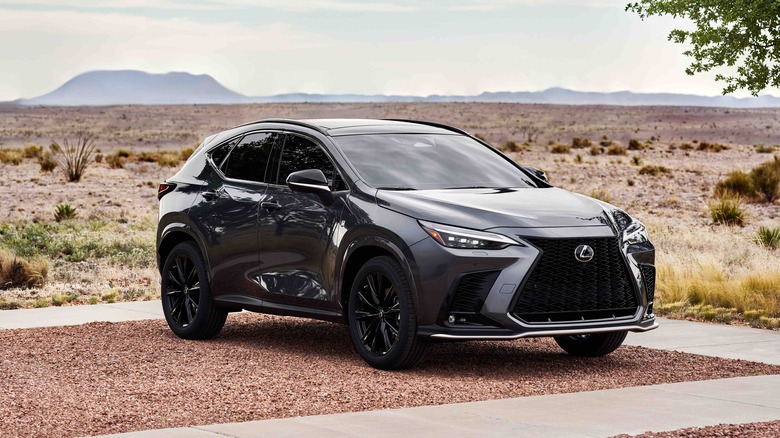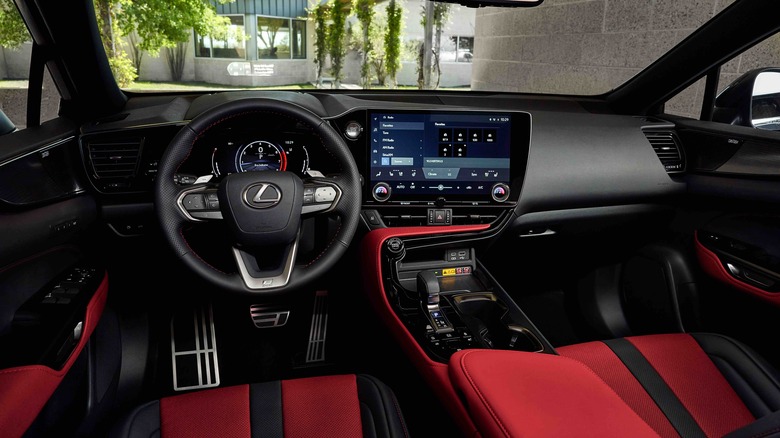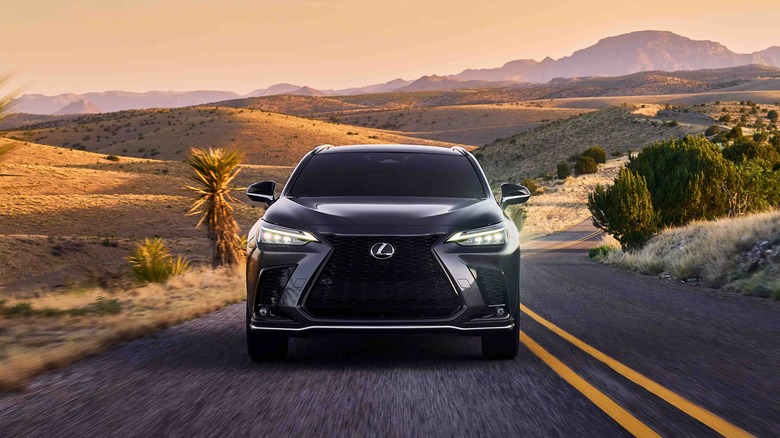Lexus NX: What Do Those Two Letters Stand For?
The Lexus brand was established in 1989 with just two vehicles: the LS 400 and ES 250, both of which served major roles in cementing the brand's status here in the United States. Since then, several cars and SUVs have helped maintain the brand's prestige, including supercars like the iconic LFA and luxury flagships like the LX. Noticing a theme here? Something that all these Lexus models have in common is two- or three-letter names, and it's a trend that continues with the brand's latest vehicles.
All current nameplates in the Lexus lineup consist of letters, with no recognizable words. You won't see names like "Crown" or "Tacoma" at your local Lexus dealership (unless it's a Toyota that's been traded in), just ones with a few letters like ES, IS, RC, and of course, the NX. According to Lexus, NX stands for Nimble Crossover, reflecting how this particular crossover sits at the intersection of a midsize sedan and a capable off-road vehicle.
Just slightly larger than the UX, the Lexus NX is the second-smallest SUV from the luxury automaker, and it's relatively enjoyable to drive. When we reviewed the 2024 Lexus NX, we thought it was comfortable and came with lots of modern features, although it was a bit less sporty than we'd hoped for from a name like Nimble Crossover.
The NX's history and its place in the Lexus lineup
The NX debuted in 200t and 300h forms at the Beijing auto show in 2014, so it's not exactly Lexus' oldest model. The second generation of the NX hit the scene in 2021 as a redesigned 2022 model. A few features have been added since the big redesign for the 2022 model, but for the most part, the NX has been the same for the past few years — a strong luxury offering in the automaker's lineup. The 2025 Lexus NX comes in a variety of different configurations and with different powertrains worth talking about. Before we get to those details, though, let's quickly mention where it sits in Lexus' lineup.
The smallest Lexus SUV is the UX, a compact crossover that we found surprisingly impressive to drive. The NX slots in just above the UX, and is a bit smaller than the popular RX SUV (the NX is 9 inches shorter from nose to tail) and priced slightly lower. And if you ever wondered, RX stands for Radiant Crossover. Most Lexus models, it seems, have some sort of meaning behind their two- or three-letter names, tied to their size, performance, and intended audience.
What the NX offers today
Now that we've properly placed the NX in the Lexus hierarchy, let's talk about the power and pricing. You can get standard NX with two different powertrains: a 2.5-liter four-cylinder engine and a turbocharged 2.4-liter four-cylinder. NX 250 models with the standard engine put out 203 hp and 184 lb-ft of torque, while the upgraded turbo motor powering NX 350 models produces 275 hp and 317 lb-ft. Next in the lineup is the 350h, the hybrid version of the NX. It pairs a 2.5-liter four-cylinder engine with a hybrid system for a combined output of 240 hp. It also provides a big jump in fuel economy; the 350h has an EPA-estimated fuel economy of 39 mpg combined, which is impressive for the class. Meanwhile, the standard non-hybrid models return either 24 mpg combined or 28 combined.
If you want to add even more electricity into the mix, there's the plug-in hybrid version of the NX. It uses a 2.5-liter engine like the other NX models, but with a larger battery that allows for some electric-only range and even more power: 304 hp. According to the EPA, the plug-in NX 450h can go up to 37 miles on a charge before needing to use gasoline. With all these powertrain options, the NX is pretty versatile, but it has a wide pricing spread, too. The base NX 250 starts at $42,260, while the top-trim NX 450h+ F Sport plug-in hybrid starts at $63,625 (both prices including $1,295 destination fee).


